#Oxidation Paintings
Explore tagged Tumblr posts
Text

It was Andy Warhol’s birthday this past Tuesday, August 6th, so today seemed like a good time to post some images taken at The Andy Warhol Museum in Pittsburgh. Warhol was a prolific artist and the museum does an excellent job at presenting both his body of work, and the essence of what made him such a unique presence in the world.
Below are a few selections from what was on view in February of 2024.
Warhol made several film works including Screen Tests, his series of portraits in which the subjects attempted to remain still for around three minutes. The results were then played back in slow motion. Many well known names participated.

The museum has a room dedicated to their recreation of his delightful installation Silver Clouds.
From the museum about this work-
“I don’t paint anymore, I gave it up about a year ago and just do movies now. I could do two things at the same time but movies are more exciting. Painting was just a phase I went through. But I’m doing some floating sculpture now: silver rectangles that I blow up and that float.” —Andy Warhol, 1966
In April 1966 Warhol opened his light and music extravaganza the Exploding Plastic Inevitable (EPI), a complete sensorial experience of light, music, and film at the Dom, a large dance hall in the East Village in New York City. Running concurrently with the EPI was Warhol’s bold and unconventional exhibition at the prestigious Leo Castelli Gallery that comprised two artworks: the Silver Clouds and Cow Wallpaper.
Constructed from metalized plastic film and filled with helium, the floating clouds were produced in collaboration with Billy Klüver, an engineer known for his work with artists such as Robert Rauschenberg, Yvonne Rainer, and John Cage. Warhol originally asked Klüver to create floating light bulbs; an unusual shape that proved infeasible.
Klüver showed Warhol a sample of the silver material and his reaction to the plastic sparked a new direction, “Let’s make clouds.” They experimented with cumulus shapes, but the puffed rectangle was the most successful and most buoyant. The end result was w hat Warhol was looking for from the beginning— “paintings that could float.” Silver Clouds, like the EPI with its flashing lights and overlapping films, was an explosion of objects in space and presented an immersive, bodily experience for the viewer.


Warhol was always experimenting with new ideas and processes. Pictured above is Oxidation, 1978, and a closer look at the canvas. It is part of Altered States, an exhibition of this body of work and its creation.
Below the museum explains Warhol’s process, and how the paintings were altered both during past exhibitions, and again when the museum lost power and climate control.
Andy Warhol’s Oxidation paintings represent the artist’s radical approach to Abstract Expressionism, a movement popularized by painters like Jackson Pollock and Mark Rothko after World War II, and a style Warhol didn’t experiment with until late in his career. Between 1977 and 1978, however, when Warhol began testing the corrosive effects of oxidation by mixing copper paint and urine, the beautifully iridescent canvases were a critical breakthrough at a time when his standing in the art world had taken a hit. The Oxidation series, along with abstract works like the Rorschachs and Shadows, allowed Warhol to reinvent himself yet again.
To create the Oxidation works, Warhol and his assistants mixed dry metallic powder in water before adding acrylic medium as the binder.
Canvases were spread out on the studio floor and coated in copper paint. Warhol’s assistants or Factory visitors were then invited to urinate on the canvases while the paint was still wet. As the urine acid oxidized the metal in the copper paint, a range of unpredictable patterns emerged.
Before Warhol’s death in 1987, the Oxidation paintings were exhibited only three times, including the Paris Art Fair FIAC at the Grand Palais, where the artist first noticed the volatility of the works. “When I showed them in Paris, the hot lights made them melt again,” he said.
“It’s very weird.. they never stopped dripping.” More than 45 years later, unpredictability remains a hallmark of the series. In June of 2020, after a power outage disabled the museum’s climate control for several days, staff conservators noticed changes similar to what Warhol observed in Paris. New drips appeared on the surface of Oxidation (1978), shown here, and the areas of corrosion changed color.
This presentation seeks to answer a deceptively simple question:
What happened? Museum conservators, with help from colleagues in the field and scientists, have been hard at work finding answers. The examination and analysis of the Oxidation paintings in the museum’s collection will contribute to proper stewardship, preservation, and treatment of the nearly 100 other works worldwide.

Several of the paintings on view are in his signature style, including portraits of famous (and less famous) people, and in one room, different skulls in various colors.
From the museum-
Warhol’s Skull paintings have often been considered memento mori, recalling the centuries-long tradition of art that reminds us of our mortality. Memento mori, from Latin, translates roughly to “remember that you are mortal” or “remember you will die.” Warhol’s own near-death experience happened in 1968, when troubled writer Valerie Solanas shot Warhol in the abdomen after claiming the artist had lost a script she had written. After reportedly being declared dead upon arrival at the hospital, Warhol’s life was saved during five hours of surgery. After nearly two months, he was released from the hospital but required further surgeries over the following years.
On one of the floors is The Archives Study Center. There, behind glass, are some of Warhol’s Time Capsules- boxes he filled with a wide variety of items, sealed and put into storage.


On the same floor is the Great Dane pictured above, Champion Ador Tipp Topp (“Cecil”), who Warhol bought at an antique store after being told the dog had belonged to Cecil B. De Mille. The dog remained in Warhol’s office until his death.
A little more detail from the museum-
This mounted Great Dane, called Cecil by Warhol and his associates, was once a champion show dog. Born in Germany in 1921, original name was Ador Tipp Topp. Owned by Charles Ludwig, a top breeder, Cecil was sold to Gerdus H. Wynkoop of Long Island who entered the dog in several shows earning him the title of Champion by 1924, and Best of Breed at the Westminster Kennel Club.
After his death in 1930, Cecil’s remains were sent to Yale University in Connecticut, where they were mounted and displayed with 11 other breeds in what was known colloquially as “the dog hall of fame” at the Peabody Museum. However, by 1945, the canine display was removed to storage and forgotten.
In 1964 Scott Elliot, a Yale drama student, went to the Museum to find birds for a new play. He found the birds and also bought all 12 dog mounts for $10 each. When Elliot had to move a few months later, many of the mounts were left with a friend who put them in rented storage, which went unpaid and the contents were dispersed.
Warhol came across the display in an antique shop on 3rd Avenue several years later. He was told that the dog had belonged to film director Cecil B. DeMille. Warhol bought the story and the Great Dane for $300. Cecil found his final home at Andy’s office, where he was kept until Andy’s death in 1986.
Cecil’s current appearance differs from his championship form. His coat was originally black and white but exposure to sunlight has faded it to brown. Over the years, it sustained damage to the ears; they were repaired in April 1994 in anticipation of the opening of the Warhol Museum, to reflect the style of current breeds.
This is just a brief selection of what was on view. The museum collection also includes his early commercial paintings, some of his collaborations, television work, and more.
One of the great things about Andy Warhol is that no matter how much you know, there are always new things to learn. Even more than thirty years after his death, he remains as relevant as ever.
#Andy Warhol#The Andy Warhol Museum#Silver Clouds#Archives#Art Installation#Cecil B. DeMille#Film#Film and Video#Oxidation Paintings#Painting#Pittsburgh#Pittsburgh Art#Pittsburgh Art Shows#Pittsburgh Museum#Screen Tests#Sculpture#Skulls#Time Capsule#Video#FBF
3 notes
·
View notes
Text
The more I re-read Shidou's egoist bible the more the idea of him witnessing a violent death creeps in my mind... his obsession with blood and flesh is definitely something that makes me think.
Him thinking of mixing blood with pink paint? Same blood that keeps us alive? Shidou is so raw. I bet he would also use semen to mix with paint, since it's from where life comes, in a way. He would absolutely experiment with that type of stuff.
When will his backstory drop kaneshiro. I cant keep on living like this.
#blue lock#bllk#shidou ryusei#ryusei shidou#bllk shidou#im also happy that my hc of him being a guro artist is basically canon now lol#blood and paint... its a pity blood turns brown due to oxidation#there's ways to keep it vibrant methinks but you gotta mess up with chemicals ig#im not well versed with chemistry
43 notes
·
View notes
Text



An oxidation beast and bog shambler from the Bones 6 Kickstarter
15 notes
·
View notes
Text
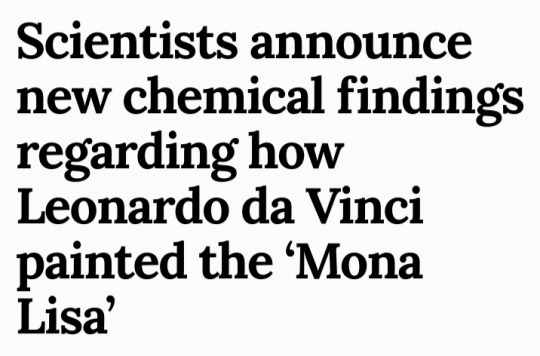



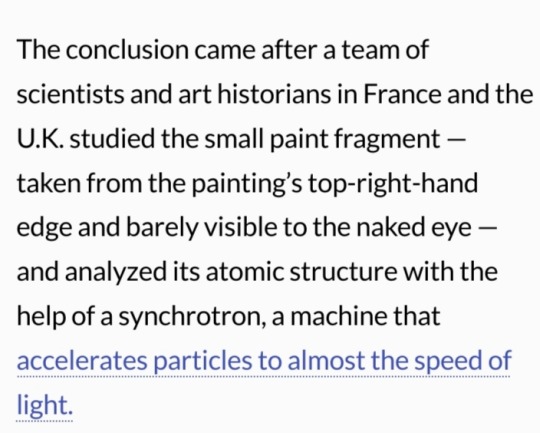
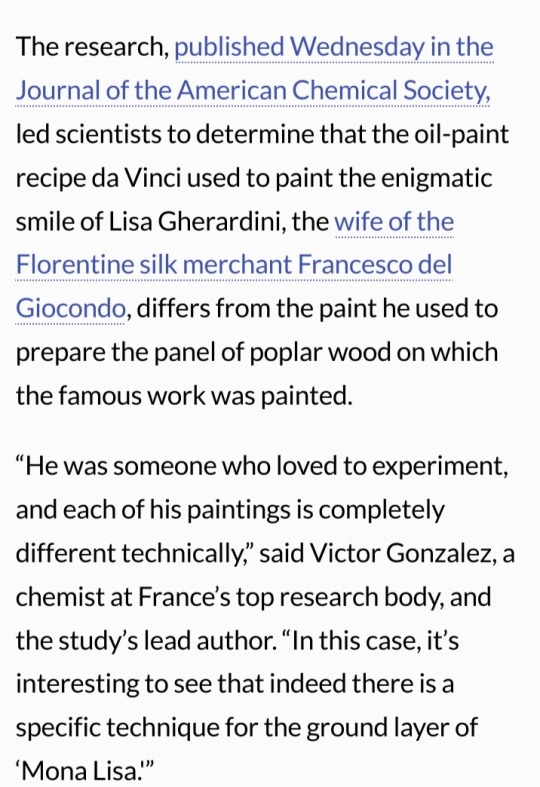
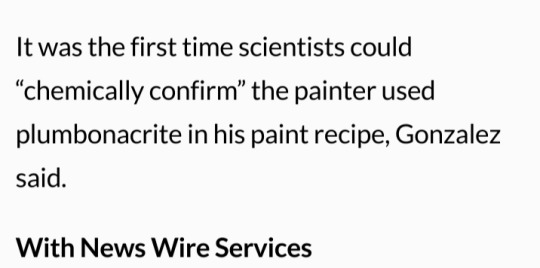

#Mona Lisa#Leonardo da Vinci#Louvre Museum#plumbonacrite#synchrotron#Journal of the American Chemical Society#Lisa Gherardini#Francesco del Giocondo#paint fragment#painting#lead oxide#chemical analysis
14 notes
·
View notes
Text
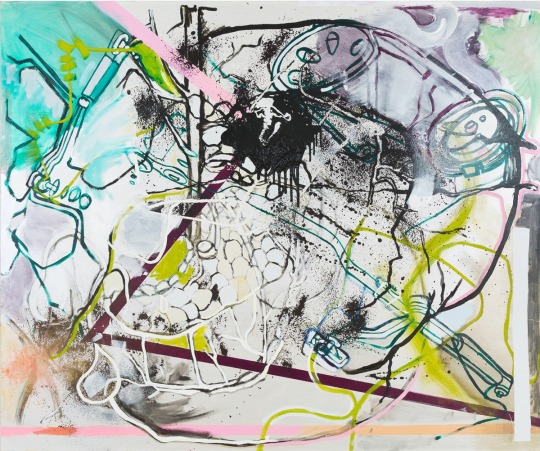
Lydia Dona, "Platinum Journeys," 2016,
Oil, acrylic, enamel, and iron oxide on canvas,
60 x 72 inches.
#art#abstract#abstraction#painting#forms#abstractart#lydia dona#platinium#journeys#machines#oil#acrylic#oxide#iron#enamel
50 notes
·
View notes
Text
Silver Shadows
"Silver Shadows" reminds me that Autumn has arrived!

View On WordPress
#2023#abstract art#abstract painting#acrylic painting#autumn#home decor#intuitive artist#painting#Pixels Shop#Prints#rust#San Diego Artist#Sketchbook#Tiffany Arp Daleo#Women Artist#Yellow Oxide
20 notes
·
View notes
Text

heres some of my stuff glazed and ready to be fired
#all the ones w transparent glaze ive either drawn or painted w underglaze#the reddish ones will come out near black with oxidized undertones#theres four pieces not pictures bc i was still working on them heehee
4 notes
·
View notes
Text
youtube
Soy milk is a natural binder that can turn colorful earth pigments into a wonderful paint to create printed designs on fiber. The protein of soy milk allows minerals like ochre, umber and red oxide to adhere to textile to expand your natural palette with the rich hues found beneath your feet. This video tutorial will show you how to make homemade soy milk to prepare textile and earth pigment paint to print a one-of-a-kind pattern on cotton fiber.
CHAPTERS
0:00 Introduction - Earth pigment soy paint
1:29 Colorful minerals
2:32 Natural Earth Paint
4:09 Soy milk binder
6:52 How to make soy milk
9:23 Fiber prep
10:40 How to make soy pigment paint
12:19 Printing pad
15:44 Earth pigment printing
17:21 Results
20:59 Wrap up
21:26 Sneak peek of next tutorial
22:17 Blooper
SUPPLY LIST
Textile - cotton shown in video
Earth pigments
Soy milk
Measuring cup
Measuring spoon
Tongs
Bowl
Whisk
Mark-making tools - sponge, brush, stencil, etc.
Printing pad
Pins, tacks or painter's tape
Scrap cloth for barrier
#Margaret Byrd: Color Quest#solarpunk#how to#how to dye#natural dye#dye#diy#do it yourself#soy milk#soy paint#earth pigment#ochre#umber#red oxide#cotton#Youtube
5 notes
·
View notes
Text



#acrylic#minature painting#figurine painting#art#dnd#wings#dragon#oxidized copper#copper dragon#copper
2 notes
·
View notes
Text

Mieszaj pomiędzy podstawowym "sznurkiem" odcieni skóry a bardziej kolorowym sznurkiem Red Oxide, aby uzyskać cieplejsze odcienie na policzkach i ustach.
Aby uzyskać bardziej stonowane kolory włosów lub chłodniejsze odcienie skóry, zmieszaj szary odcień z podstawowym odcieniem skóry.
Szary odcień nadaje się do niebieskich oczu i tła.
#anna wakitsch#oil painting#mixing colors#paints#black ivory#titanum white#transparent red oxide#burnt sienna#palette
2 notes
·
View notes
Text

I have new open stock handmade watercolors in my shop. $5.75 plus shipping per half pan.
- Lightfast
- Non-toxic
- Granulating
Unfortunately, I can only offer shipping to North America at this time.
#open stock watercolors#open stock art supplies#handmade watercolor paint#vegan watercolors#small business#handcrafted art supplies#small shop#hand mulled#cassel earth#pbk 11#earth colors#yellow felsite#red iron oxide#green earth
4 notes
·
View notes
Text

Andy Warhol
Oxidation
1977-78
#andy warhol#oxidation painting#oxidation#pop artist#pop art#abstract art#pop culture#piss painting#warhol factory#modern art#art history#aesthetictumblr#tumblraesthetic#american art#tumblrpic#tumblrpictures#tumblr art#tumblrstyle#aesthetic#artists on tumblr#tumblrposts#pop aesthetic#celebrity culture#abstraction
6 notes
·
View notes
Text
once i get my art space tidied back up i should inventory my paints. i think i might try and replicate my gouache go-to palette (I call it my iron palette - light red, prussian blue, yellow ochre, burnt umbre) in watercolors
#also i think somehow i bought windsor blue gouache instead of prussian blue gouache???#anyway i love the palette its literally just like cheap warm earth tones + prussian blue (oxidized ferrocyanide salt)#and everyone was like your palettes in each of your works feels so unified#it's not a strict palette but more a baseline for my palette#when im drafting and experimenting for a piece/series ill like#add swap and remove pigments as needed#so like in one painting i added more vibrant reds and yellows (i think lemon yellow and a less-toxic paint based on cadmium red)#but the base palette was still the above palette
5 notes
·
View notes
Text
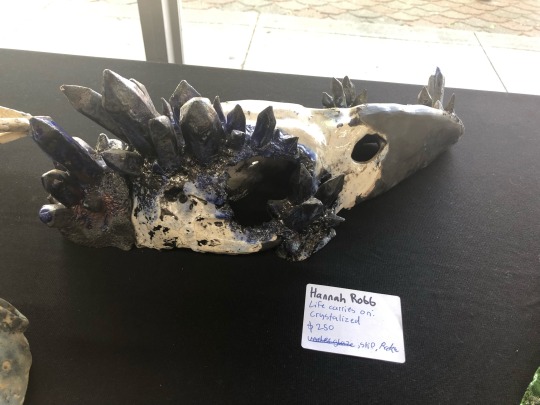


Ceramic Sculptures 2023
(Displayed at CCACA 2023 Davis)
Life Carries On: Crystallized.
Life Carries On: Stagnant Water.
Minotaur (Pouty Moo BOI).
#ceramic#ceramic sculpture#ceramic art#sculpture#clay sculpting#skulls#bird skull#crystals#alligator#alligator skull#lillies#lillypads#raku firing#acrylic paint#minotaur#pouty moo boi#bull#cow man#man cow#oxides#dark clay body
2 notes
·
View notes
Text
How Car Paint Correction in London Protects and Enhances Your Vehicle

Have you been searching for a way to protect and enhance your vehicle’s appearance? Car paint correction in London provides the ultimate solution. This detailed process removes imperfections, such as swirl marks and oxidation, leaving a flawless finish. Partnered with professional car detailing, this service also ensures your paint is protected for the long term.
Restores a Showroom Shine
vehicle’s paint naturally get dulls Over time. It happens due to exposure to the sun, environmental contaminants, and improper washing techniques. Paint correction restores the depth, clarity, and shine of the paint, making it look as good as new or even better. By removing surface imperfections, paint correction reveals the true vibrancy and gloss of the paint, giving your car a showroom-quality finish.
Removes Swirl Marks and Scratches
Swirl marks are fine, spider-web-like scratches that are often caused by improper washing, drying, or use of low-quality towels. Specialized car paint correction service in London effectively eliminates these swirl marks and other minor scratches that have developed over time. Removing it is key to making your vehicle’s paint look sleek and shiny.
Eliminates Oxidation and Fading
prolonged exposure to sunlight and environmental pollutants damages the colour coat. It happens due to the Oxidation happens to the paint. It will make the car’s paint appear faded, chalky, or discoloured. Call a car paint correction service in London to remove the oxidized layer of paint. They have the skill & expertise, to make your car look fresh.
Increases Vehicle Value
A well-maintained and polished car have a better market value and it attractive more potential buyers. Are you planning to sell your car? Take the help of a professional car paint correction service. They can significantly increase their resale value. They can make it more appealing to prospective buyers.
Improves Protection for the Paint
the freshly corrected surface is typically sealed with wax, paint sealant, or ceramic coating. It will add a layer of protection and preserve the new yet flawless finish. It also protects your vehicle against future damage caused by UV rays, acid rain, road salts, and other environmental factors.
Prepares the Vehicle for Protective Coatings
Are you looking to apply advanced protective products on your car… A paint correction is a necessary preparatory step. It ensures the surface is free of any imperfections. Without correction, imperfections would remain visible under the protective layer! It might reduce the appearance and effectiveness. So think about it.
Conclusion
Car paint correction is essential to restore their vehicle’s paint to its original, pristine condition. If you want to give the best shape to your vehicle then visit https://ecoverdevaleting.co.uk/ today! They will make your car look amazing.
#Car Paint Correction#Paint Correction London#Vehicle Detailing#Professional Car Detailing#Scratch Removal#Swirl Mark Removal#Oxidation Removal#Car Detailing London#Car Exterior Restoration#Automotive Paint Care#Showroom Shine#Paint Enhancement#Car Paint Restoration#Vehicle Paint Protection
0 notes
Text
youtube
1 note
·
View note